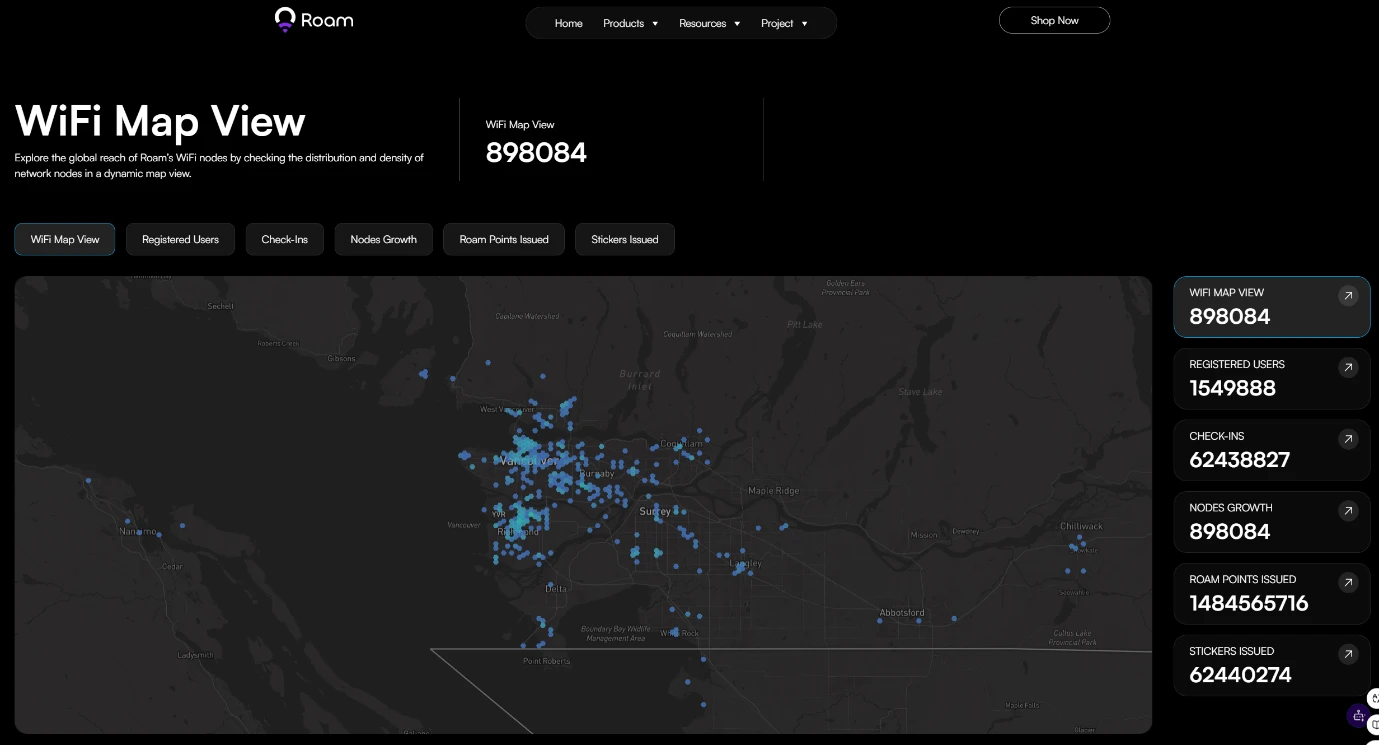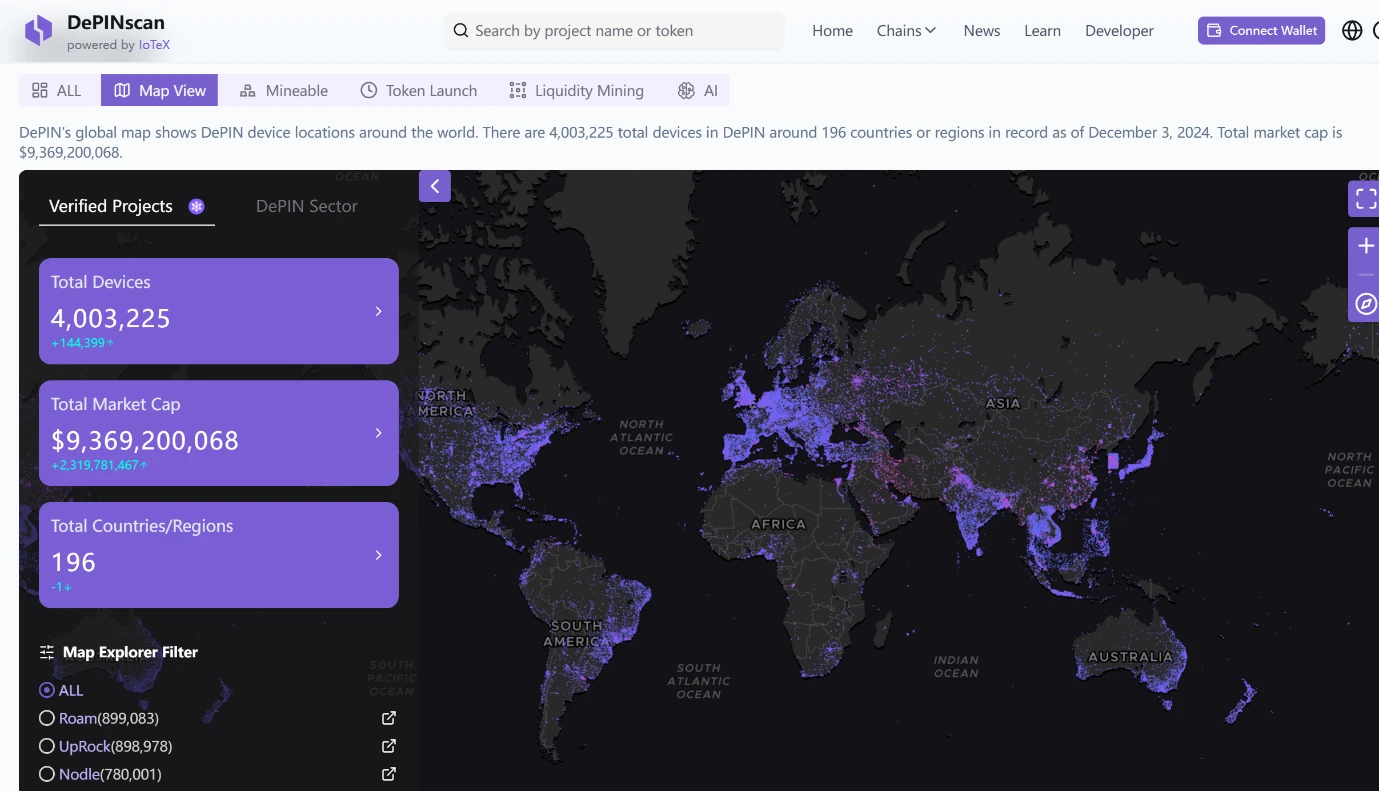Roam: How many steps are there to decentralize the telecommunications industry?
Currently, the telecommunications industry is facing the dilemma of weak revenue growth and rising costs. The revenue growth rate of traditional telecommunications services, especially B2C services, has stagnated amid the increasingly fierce price war among peers. As traditional core telecommunications services have shifted from voice to VoIP, from SMS to chat, and from IPTV to video streaming, tariffs have also decreased.
Restricted by the industrys existing complex systems and processes, traditional telecommunications companies find it difficult to provide truly customer-centric services and experiences. The simple and stereotyped customer packages they provide are increasingly unable to meet customer needs in the context of todays social development.
At the same time, because the deployment of 5G networks requires large-scale fiber coverage and the construction of all-fiber fixed broadband networks, global telecom companies are facing huge upfront capital expenditures, resulting in less than half of the global 5G network deployment being completed. With stagnant revenue growth and declining profit margins, the revenue of traditional telecom companies is increasingly unable to meet the huge investment needs.
Roam: Decentralized Innovation in the Telecommunications Industry
In helping the traditional telecommunications industry solve the huge upfront investment costs, Roam uses a user-centric, decentralized deployment approach to provide an innovative solution for the industry upgrade of OpenRoaming™ WiFi. And with the natural entry properties of WiFi, Roam bridges the gap between Web2 and Web3 ecosystems, and re디파이nes the industry standards of traditional telecommunications services in user experience and user data through decentralized technology.
At present, compared with mobile cellular networks, traditional WiFi still carries more than 70% of the worlds data traffic. However, the traditional guest WiFi infrastructure is outdated, which not only makes it difficult to meet users growing demand for network connections, but the lack of privacy and data security is also often criticized by users, resulting in the failure to fully realize the potential of WiFi.
Now, Roam has integrated traditional OpenRoaming™ technology and DID+VCs Web3 technology through cooperation with the WiFi Alliance and the Wireless Broadband Alliance (WBA). By building a decentralized communication network based on the OpenRoaming™ framework, it not only solves the initial capital cost, but also allows WiFi to achieve seamless login and end-to-end encryption like mobile cellular networks. Users do not need to log in repeatedly between different WiFi networks, and can connect to WiFi as seamlessly as cellular mobile data, which not only improves the user experience, but also enhances the connection stability.
In addition, MetaBlox Labs Inc., the company behind Roam, is the only Web3 project in the world with the OpenRoaming™ network IDP qualification. It will jointly participate in the creation, verification and management of basic identity information of users in the decentralized identity system. Roam ensures the secure connection of users and devices and the protection of user data privacy through the DID+VC technical solution.
While ensuring the security of user data, Roam actively encourages users to participate in network co-construction. Users can share WiFi nodes through the Roam App or upgrade their own WiFi to the more secure and convenient OpenRoaming™ WiFi. Roam users can not only enjoy secure and seamless connections between four million OpenRoaming™ hotspots around the world, but also find Roams self-built network nodes in sparsely populated areas such as the Siberian Plateau, northern Canada, and Alaska. The community co-construction approach has greatly expanded the coverage of the Roam network and improved the user experience.
Roam eSIM: A seamless global connectivity solution
Roams eSIM provides the last seamless piece of the puzzle for its vision of a global open wireless network. Users can activate data plans directly on their devices, avoiding the hassle of physical SIM cards. Currently, Roam eSIM covers more than 160 countries around the world, providing global users with flexible and cost-effective packages, making it an ideal choice for people traveling and on business trips between different countries.
Roam provides an innovative way for users to earn free global data traffic or Roam Points tokens by signing in, inviting friends, or interacting with Roam social media. These points tokens can not only be burned and exchanged for $ROAM tokens after Roam TGE, but also exchanged for various other rewards or services within the Roam ecosystem.
In the future, Roam points can be redeemed for more benefits from airlines or telecom partners. eSIM completes the last piece of the puzzle for Roams open wireless network map, ensuring a seamless global connection experience for users across all channels.
Free-to-use business model and token incentives empower the community
Roam encourages users to build a decentralized network by providing free wireless access and a variety of incentive mechanisms. Users can earn Roam points by upgrading or sharing WiFi, creating sustainable and stable income. At the same time, the $ROAM tokens redeemed by Roam points in the future can also offset the initial hardware cost investment.
This incentive mechanism has greatly promoted the rapid growth of the Roam network. As of early December 2024, Roam has more than 1.54 million registered users and more than 890,000 self-built network nodes. Since the launch of eSIM in October this year, Roams user registrations have soared from 750,000 to 1 million in less than 20 days. Today, with more than 600,000 network verification interactions per day, Roams user engagement far exceeds that of traditional telecom operators.
△ As of December 3, 2024, Roam has 1.54 million registered users and 890,000 self-built nodes
Roam breaks through the traditional centralized channel model and creates a user-centric network ecosystem that is co-built with users. Users actively play the dual roles of builders and validators in network construction and optimization.
In the past year, Roam has achieved amazing growth in the number of users and node deployments, consolidating its leading position in the DePIN project, despite the unstable market conditions and without a lot of marketing investment. According to DePINscan.io data in December, Roam ranked first in the DePIN project, attracting widespread attention from traditional telecom operators.
△ Roam ranks first on DePINscan
Connecting Web2 and Web3 to achieve large-scale applications
Roam combines Web3 technology with the existing OpenRoaming™ framework to build a decentralized global open wireless network and is committed to becoming the telecommunications data network of the DePIN ecosystem. As the number of users grows, Roam will not only be able to provide users 3W data to Web3 projects within the ecosystem (such as SocialFi and GameFi), but will also be able to generate additional income from its expanding network nodes and user base, thereby continuing to feed back to the community as a driving force for its project flywheel.
In the future, Roam plans to deeply integrate AI and DePIN technologies. As the entrance to large-scale user traffic, WiFi is naturally suitable for AI large-scale model training. Roam will achieve seamless interaction between hardware devices and advanced AI systems, and open up data connection and sharing among people, devices, assets and AI.
Roam is ushering in a new era for the traditional telecommunications industry through decentralized hardware deployment and an innovative free-for-user business model. Its community-driven model and user-centric incentive mechanism have driven the rapid growth of the Roam network, enabling its applications to be initially implemented on a large scale. As Roam continues to expand and integrate new technologies, it will bring more profound revolutionary changes to the telecommunications industry, help users more actively participate in network construction and optimization, and lay the foundation for a secure and sustainable Web3 DePIN ecosystem in the future.
This article is sourced from the internet: Roam: How many steps are there to decentralize the telecommunications industry?
Original | Odaily Planet Daily ( @OdailyChina ) Author | Fu Howe ( @vincent 31515173 ) pump.fun has rapidly risen in this bull market thanks to Meme coin transactions and has become the focus of the industry; the platforms cumulative revenue has reached nearly 230 million US dollars, and its daily income even exceeds the transaction fees of leading Layer 1 networks such as Solana and Ethereum. Under the glory, there are undercurrents. Less than half a year after the live broadcast function was turned on, this platform, which was originally aimed at creating the dream of wealth, was gradually eroded by greed and extreme behavior. From animal cruelty to pornographic live broadcasts to threats of violent crimes, users have repeatedly crossed the bottom line of morality and law in…









